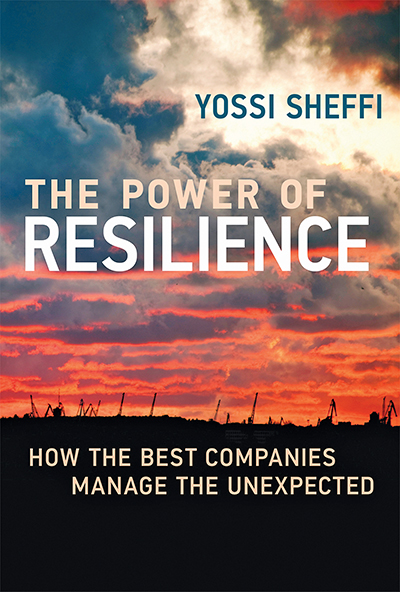In 2003 a tornado ripped the roof off Procter and Gamble’s Pringles chips plant in Jackson, Tennessee, threatening supplies of the product to customers in the United States, Latin America, and Asia. Not only did the manufacturer quickly find alternative supplies, it also found ways to improve its supply chain.
P&G’s rapid recovery was the result of a string of actions that can be summed up in a single word: flexibility.
Flexibility enables resilience. In today’s highly uncertain business environment, it can mean the difference between a disrupted supply chain that is disabled long enough for rivals to steal competitive ground, and one that bounces back swiftly and is actually stronger than before. Flexibility ensures that when the chips are down (literally, in the above example), they are not down for long.
How can companies build flexibility into their operations? A number of ways are described in my latest book The Power of Resilience: How the Best Companies Manage the Unexpected (MIT Press, 2015). Here are four examples being used by companies in a wide range of industries.
Flexible Manufacturing
When P&G suffered the damage described above, it was fortunate enough to have a second plant in Mechelen, Belgium, that also made Pringles chips. The company ordered extra raw materials with an accelerated lead-time, boosted production in Belgium, and tapped into inventories in Europe to help cover the shortfall left by its damaged plant in Tennessee. But this was not all that P&G did to flex with the situation.
Only two packing lines in Belgium could run the Asian SKUs owing to case-count differences. A special quality assurance team was formed to oversee production of the unique flavors needed for Japanese products.
The general lesson companies can draw from the P&G example is that although it’s cost-prohibitive and probably infeasible to spread your risk by being able to make anything everywhere, some flexibility in where products are manufactured can enable the enterprise to recover rapidly from a disruption. In fact, it is possible to achieve extremely high levels of manufacturing flexibility at the enterprise level with a relatively modest amount of flexibility at the plant level. As long as some spare capacity exists in a group of factories, companies can shift product assignments between facilities to create a system that is agile enough to make every product even if one facility is disrupted.
Risk Pooling
Dr. Pepper Snapple Group built its Victoria, California, plant with flexible bottling lines that can handle both cold- and hot-fill products, including carbonated soft drinks, energy drinks, teas, juices, and bottled water. Moreover, each line can handle different container sizes.
The flexibility to make different products on the same equipment enables risk pooling — a reduction in overall risk by aggregating across multiple risks.
Risk pooling is primarily a strategy to reduce operational demand volatility. But it is also an element of flexibility that can be helpful during times of disruption. For example, if a major natural disaster creates a surge in demand for bottled water, or if an equipment failure at a flavoring supplier prevents the production of certain products, Dr. Pepper Snapple can shift production very quickly at modest cost.
Flexible Distribution Networks
Walmart’s wide selection and everyday low-price strategy depends on the smooth functioning of its distribution network. Should a distribution center (DC) go down on account of weather, natural disaster, power outage or other problems, each DC has two or three nearby facilities that can function as backups.
The strategy requires that Walmart have spare capacity in each DC, so that it can continue to serve its original region while contributing to the region affected by a disabled DC.
Online giant Amazon has followed a similar strategy. The company embarked on an ambitious expansion of its network of fulfillment centers around the US partly to increase its resilience by building enough spare capacity to maintain operating levels when a disruption strikes.
Flexible Inventory: Postponement
Postponement is a supply chain strategy that involves a design of a product and a production process so that the point of differentiation is delayed as much as possible. Rather than hold extensive inventories of each finished product variant, the company holds inventory in an unfinished intermediate state and performs the last step (customization) when it gets a firm order or when demand projections are more accurate.
Companies that have used postponement strategies include HP (printers customized for different countries), Reebok (sports fan apparel customized to various team stars), many automotive manufacturers (using the same “platform” for several models), Bic (retail packaging postponement), paint manufacturers (cans of paint customized to different colors), and many others.
Although postponement is primarily a way to handle demand-risk in the supply chain, it also can help during a supply disruption. Having inventory of semi-finished products means that the finished product can be allocated to the most important customers in case of a shortage.
Balancing Act
As can be seen in the above examples, flexibility is essentially a strategy for increasing the number of potential uses for a given asset. Whether it is a plant or production line that can manufacture several products, or the cross-training of employees so they can perform multiple tasks, the more versatile an asset is, the more options it offers when a disruption occurs.
Flexibility often goes hand-in-hand with redundancy as a strategy for building supply chain resilience. Flexibility can cover longer-duration disruptions with a shift in asset deployment, but may take time to implement. Redundancy — such as having backup inventory, for example — can be activated quickly, but its impact might be relatively short-lived. The challenge for companies is achieving the right combination of the two.


Yossi Sheffi is an Elisha Gray II Professor Engineering at the Massachusetts Institute of Technology and Director of the MIT Center for Transportation & Logistics.
